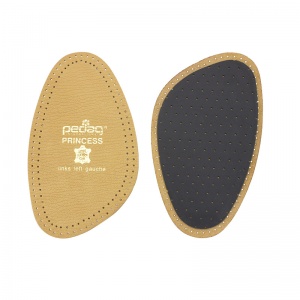| What is Metatarsalgia?1 Comment6 July 2015 | John Metatarsalgia is commonly used as a catch-all term to describe pain and inflammation on the ball of the foot. Specifically, it is when the balance between the metatarsals (the long bones between your toes and rearfoot) is disrupted and this usually causes pain and inflammation on the balls of the feet. The metatarsals are designed to share a person’s weight evenly, and if the balance between these bones is disrupted it can cause foot pain of various intensity. If left untreated, metatarsalgia can lead to misalignment of your gait, which causes pain in other parts of the body, for example the lower back and hip. What are the Symptoms of Metatarsalgia?The main symptom of metatarsalgia is pain on the ball of the foot — the severity of this pain can vary greatly but it usually worsens when you run or walk (especially if you are barefoot on a hard surface) or when you flex your feet. The type of pain can also vary. Sometimes the pain can be aching or burning or sometimes it can be a shooting pain or numbness. These symptoms usually develop and worsen over time, however it can happen suddenly, particularly if you just started running or increased the time or intensity of your runs. Another reported symptom of metatarsalgia is discomfort while wearing shoes or socks. What Can Cause Metatarsalgia?There are many possible causes of Metatarsalgia, the most common of which is extra pressure on the front of the foot. This causes soft tissue and bone to be damaged and can be due to a number of factors including being overweight, wearing high heels or ill-fitting shoes, and exercises which put extra pressure on the balls of your feet, such as running and tennis. There are also medical conditions which can lead to metatarsalgia; for example, arthritis can cause joints to swell and this can change the balance of the metatarsals. Bunions can weaken the and hammer toe (where one of your middle toes is bent downward) can also cause uneven weight distribution on your metatarsals through the weakening of your toes. How Can Shoe Insoles Help with Metatarsalgia?The right shoe insole can help greatly with metatarsalgia, especially by absorbing the shock your feet experience while walking or running. This cushions the pressure on the bottom of your feet and reduces the strain on your metatarsals. In addition, the right shoe insole can help separate the foot bones to properly distribute your weight. This stops pressure being put on the metatarsals unevenly, which helps reduce the root cause of metatarsalgia. Visit the Shoe Insoles website for our range of Insoles for Metatarsalgia.
|










Hi there. I have very high arches and am overweight so struggle to find suitable orthotics. I have some Vionic trainers which, according to my physio, have improved my gait but I need insoles for my boots. The problem has resulted in a very sore/tender small bone on the outside of my foot, sort of next to the small toe. I m wondering if you can recommend an orthotic which might also relieve the pressure on that bone. I bought Vionic active insoles from you recently as my physio said I needed ones which would also address heavy impact. Any advice most gratefully received.